| |
Home
Famous and Fascinating Women in History
Frontiersmen and Women
The World's Greatest Composers
Famous Women Spies
Great Authors of the World
Generals and other Noteworthy People
from the Civil War
The Presidents of the United States
The First Ladies of the United States
Homes and Monuments of and to
Famous People
Historical People and Events by Month for Each Day of the Year!
Famous Figures in Black History
The Calvert Family and the Lords Baltimore
Understanding the American Revolution and its People
Everything Beatles!
Everything Maryland! |
| |
|
 
|
| |  |  |
 |  | 
Franklin Pierce, His Life and the Homestead and Manse
By John T. Marck
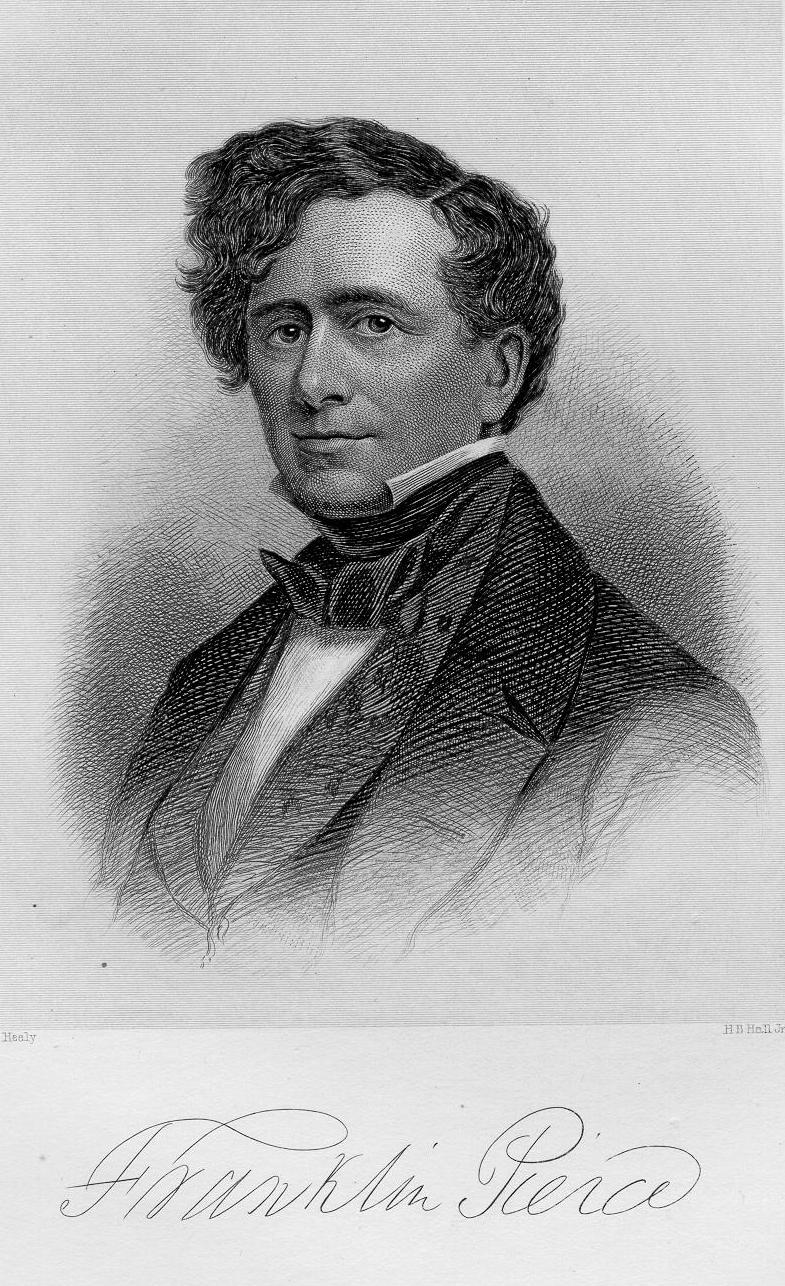
Franklin Pierce,
his Family and the Homestead
Franklin Pierce was born on
November 23, 1804 in Hillsborough, New Hampshire. He was one of
eight children born to Benjamin and Anna Kendrick Pierce.
Although not born into great wealth, Franklin did have advantages
because of his father. Benjamin was a hero in the American
Revolution, having led the local militia to various victories. As a
result, Franklin enjoyed a status that most people in rural New
Hampshire did not enjoy, which gave him influence in local politics.
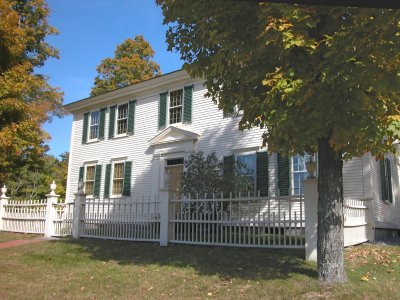
Both Benjamin and his wife Anna had
family in America since the early Puritan settlements of the 1620s.
Growing up in rough, sometimes violent times, they wanted their
children to have a better life and education than their own. The year
Franklin was born, Benjamin built the Franklin Homestead. The
home had large spacious rooms, hand stenciled walls, imported
wallpaper that symbolized the elegance of the time.
Benjamin had arrived in
Hillsborough in 1756, about 50 years after the town was settled. He
served under General George Washington in the Revolution, but at war=s
end, found himself destitute.
The surrounding land at
Hillsborough had affordable prices for land, so Benjamin purchased a
log cabin with 50 acres of land. Following the death of his first
wife, Elizabeth Andrews, Benjamin married Anna.
When the Homestead was completed,
Benjamin had become a distinguished and prosperous man. He had served
the public for more than 57 years to include two terms as the Governor
of New Hampshire. The Pierce Homestead became a gathering place
of many individuals, including Daniel Webster. Benjamin also used the
large ballroom on the second floor as a training area for drilling the
local militia groups.
The grounds of the Homestead also
consist of an artificial pond and a lattice summerhouse, which were
quite beautiful for their day. Franklin Pierce said of the Homestead:
"I
leave Hillsborough with no ordinary regret. There are a thousand
reasons why it cannot be otherwise - I have hitherto known no other
home. Here have passed many of the happiest days and months of my
life. With these streams and mountains are associated most of the
delightful recollections of buoyant and happy boyhood, and in my early
intercourse with the generous, independent, and intelligent yeomanry
of Hillsborough. I became attached to, and learned how to highly
appreciate this class of community, which constitutes the true
nobility of this country. I need hardly say that I shall never cease
to remember my birthplace with pride as well as affection, and with
still more pride shall I recollect the steady, unqualified and
generous confidence which has been reposed in me by its inhabitants."
The Life of Franklin Pierce
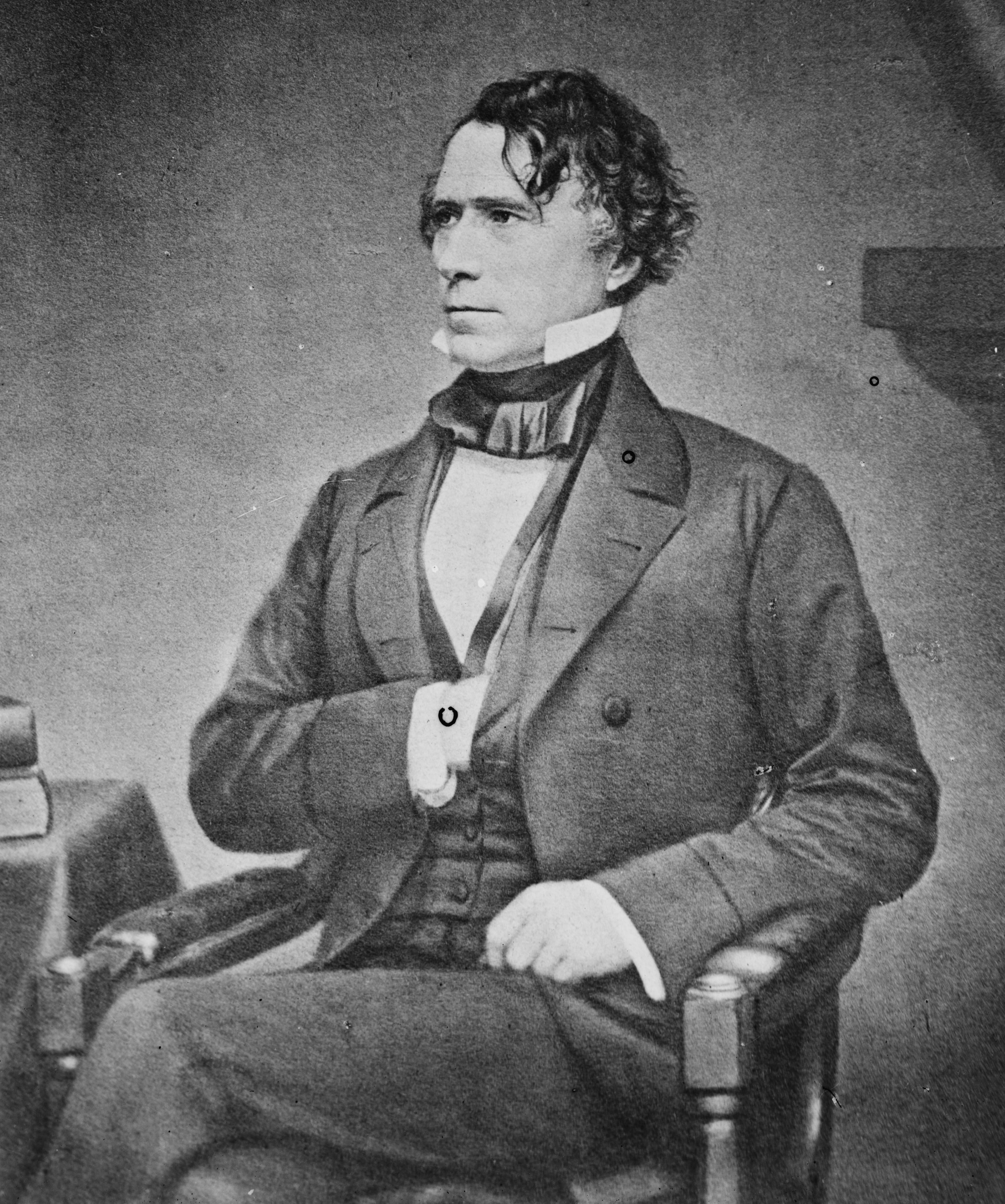
As
Franklin grew up at the Homestead, he was exposed to many who used the
house as a gathering place, to include great philosophers, politicians
and writers of the time. Pierce went on to study at Bowdoin College in
Maine and it was here that he met and established a life-long
friendship with Nathaniel Hawthorne. In 1824 he graduated 3rd
in his class and then followed his father into public service.
Four years later, in 1828, Franklin
was elected to the State Legislature, and in 1830, he was sent to the
United States House of Representatives, where he served five terms
before being elected to the U.S. Senate, at the age of 37. At the age
of 41, Franklin retired to Concord, New Hampshire, where he practiced
law. Pierce was an outstanding lawyer, who gained much fame for his
practice. It was said that it would have been fair to have 12
lawyers opposing him at the same time.
In 1834, Franklin married Jane
Means Appleton of Amherst, New Hampshire. They would have three
children together, which led to much heartache. Their first
child, Franklin, Jr., was born in 1836, but lived only three days.
Their second child, Frank Robert, called Franky, was born three years
later in 1839, died at the age of 4 in 1843 of typhus. Their
last child, Benjamin, called Bennie, was born in 1841, and died in
1853 before their eyes in a train accident.
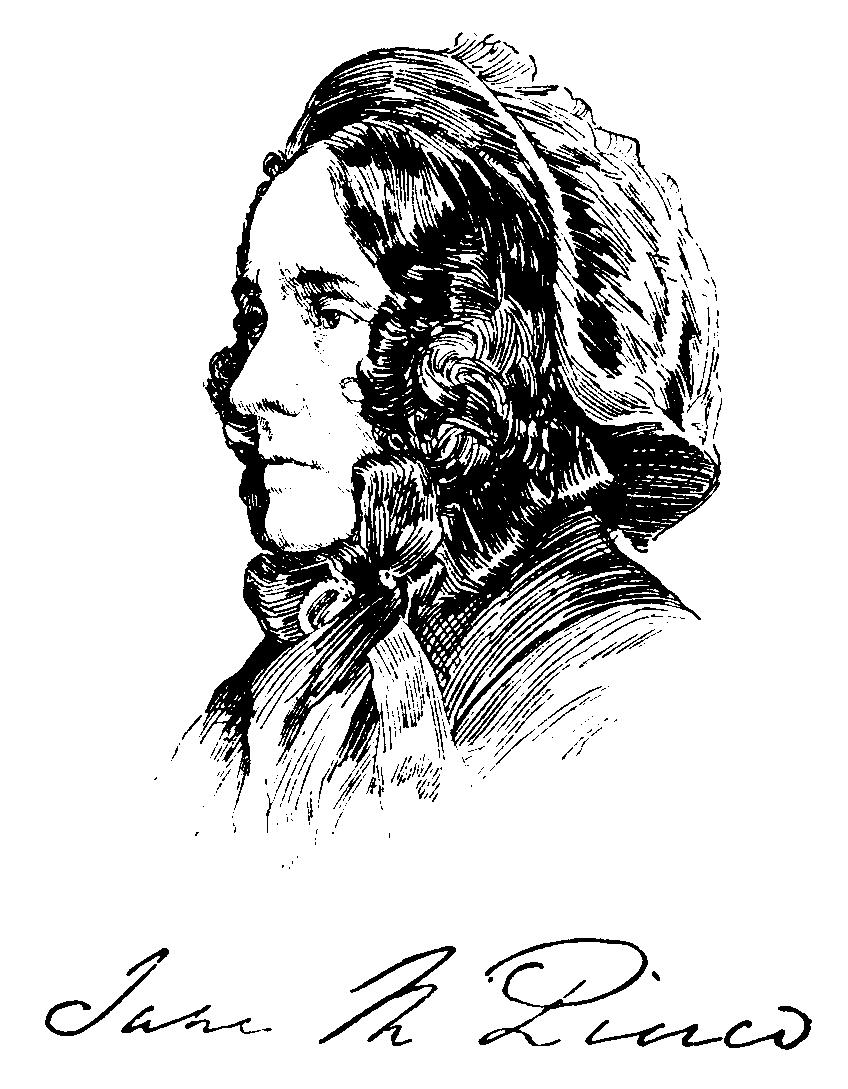
While still working as a lawyer in
private practice, in 1846, Franklin turned down a nomination for
Governor as well as a cabinet position under President Polk.
What did bring Pierce to leave his private life and practice was the
Mexican War, whereby he enlisted as a private and rose to colonel,
then finally general.
In 1852 Pierce once again was
called upon to serve his country, during a Democratic Convention
deadlock held in Baltimore. It seemed that none of the four
candidates, that included James Buchanan and Stephen A. Douglas, were
able to win the votes necessary to gain the presidential nomination.
After voting 48 times, the delegates from Virginia introduced Franklin
Pierce=s name in the hope that it would break the deadlock. The
Convention accepted the nomination, which Pierce finally agreed to
after some convincing. The election of 1852 focused on few issues, as
it was thought that the Compromise of 1850 settled the issue of
slavery. Pierce favored the Compromise and supported the Fugitive
Slave Law that won him votes in the South, resulting in an impressive
electoral victory. Thus, Franklin Pierce was elected President
of the United States at the age of 48, the youngest up to this time.
It would be on his trip to
Washington D.C. that he and his wife witnessed the dead of their son
in the train accident. Franklin's wife Jane, the new First lady,
was so grief stricken that she was not seen in public for the two
years that followed. She became known as the Shadow of the White
House. Franklin too was grieving, all the while, dealt with the
various problems that faced the nation. The two issues that
Pierce had to tackle were in the South, many feared that the
Kansas-Nebraska Territory acquired in the Gadsden Purchase of 1853
would enter the Union as Free States, which would give the North a
political advantage. In the North, many had an extreme hatred
against immigrants from Europe, whereas Pierce defended their rights
under the Constitution.
What transpired next was the
Kansas-Nebraska Act of 1854, which allowed people settling in the
western territories to decide whether or not to allow slavery? Pierce,
believing the bill upheld the spirit of the Constitution, supported
it. This resulted in a rush on both sides to Kansas, where the
conflict became armed; resulting in a bloodbath, and Pierce was
blamed.
As his term was ending, Pierce
refused to run for a second time, and spent several years in Europe
after leaving the Presidency. During his term in office Pierce did see
economic growth and expansion, as well as the ratification of the
first commercial treaty with Japan. However, Pierce, like others, was
unable to stop the conflicts that led to the Civil War.
Franklin Pierce left New Hampshire
a hero, and sadly, returned in silence.
The Franklin
Pierce
"Manse"
Concord Home
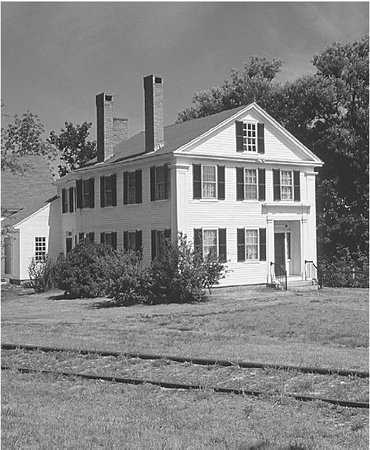
While Pierce was
in private practice as a lawyer in Concord, He and his family lived at
14 Penacook Street between the years 1842-1848. Located at the end of
North Main Street at Penacook, the house was about to be demolished in
1966 by an Urban Renewal project. This famous house, the only one
owned by Pierce in Concord was fortunately saved by The Pierce
Brigade, in 1971, which moved the house to its present site in Concord's
Historic District. Today the house is maintained by the Brigade as a
memorial to New Hampshire's
only President.
The word
"manse,"
means "the
house occupied by the householder."
It is used for this house to differentiate it from other homes
connected with Franklin Pierce. The house is a simple architectural
design, and has been restored as close as possible to the way it was
when it was occupied by Pierce, his wife and their two children. Many
of the furnishings seen there today belonged to Pierce or other
members of his family as well as included are some articles from the
White House.
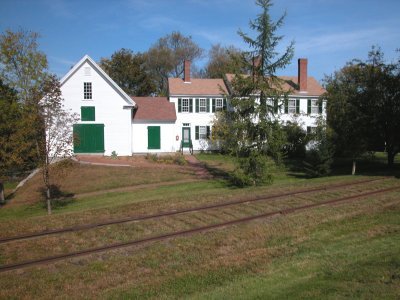
When Franklin moved into this
house, he had just resigned his post as a U.S. Senator, to resume his
private law practice. He left there to go serve in the Mexican
War, while his wife and son, Benjamin, went to stay with relatives.
After the war, it is very probable
they did not return here because of the death of Franklin, Jr.,
believing it to be haunted by his memory. In the house is a unique
portrait of Franklin, Jr., that is one of the treasures of the Manse.
In 1993, a replica barn and shed was added to the property that is
exact down to the measurements of the originals.
Gravesite
Franklin Pierce did not have what
would be considered a happy Presidency, and unfortunately, his post
presidency life was not much better. After leaving the White House, he
spent most of the pre-Civil War years in Europe, reflecting on his
many political misfortunes while President. When the Civil War began
in 1860, he voiced his support toward the North, which was strange
considering his earlier pro-slavery position. Then, Pierce, being a
loyal Democrat, did not support President Lincoln, a Republican. To
make matters worse for him, Pierce tried to blame the war on Lincoln.
This criticism of the President cost him many of his life-long
friendships.
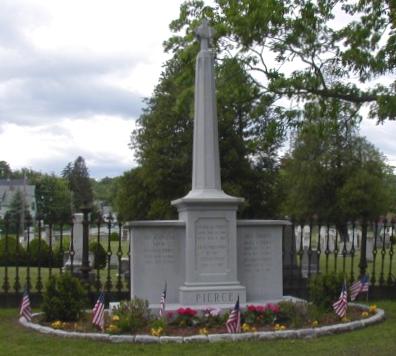
When Pierce left office in 1857,
his wife Jane was slowly dying from tuberculosis. To help ease
her pain, he took her to the West Indies and Southern Europe searching
for a more comfortable climate. All the while they moved around
these areas, Jane clutched her son=s
Bible and locks of hair from her three lost children. About the
time the Civil War began, they returned to the U.S. in Andover,
Massachusetts, and she died here on December 2, 1863.
After his wife died Pierce settled
back in New Hampshire, and by war=s
end, he was all but forgotten, remaining as reclusive as his wife had
been while in the White House. Being fond of liquor, he returned to it
as his only comfort. In 1865, when Lincoln was assassinated, an angry
mob formed outside his house. But, the once great lawyer, with
famed-oratorical skills managed to calm the crowd, and is doping so
saved his home, dispersing them peacefully. Franklin Pierce died at
his home on October 8, 1869. He, his wife and their three children are
buried at the Old North Cemetery in Concord, New Hampshire.
Quick
Biographical Facts:
FRANKLIN
PIERCE
14th President
Term- March 4, 1853 to March 4,
1857
Democratic Party
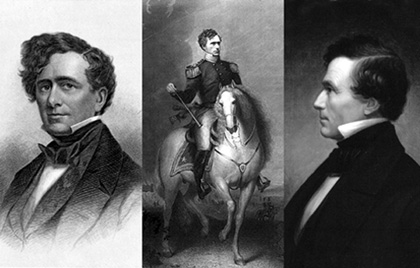
Birth:
Hillsborough, New Hampshire, November 23, 1804.
Ancestry: English
Marriage: Amherst, New Hampshire,
November 19, 1834 to Jane Means Appleton, who was born in Hampton, New
Hampshire, March 12, 1806. Jane died in Andover, Massachusetts,
December 2, 1863, and is buried in Old North Cemetery, Concord, New
Hampshire.
Children: Franklin (1836-1836);
Frank Robert (1839-1843); Benjamin (1841-1853).
Home: Pierce Homestead, Hillsboro
Upper Village, New Hampshire.
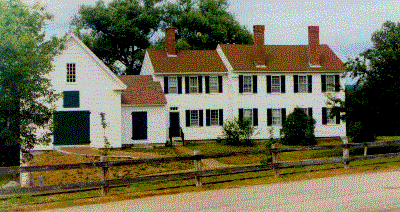
Education: Attended public school
and Hancock Academy; Graduated from Bowdoin College (1824).
Religion: Episcopalian
Occupation before Presidency:
Lawyer, politician, and soldier.
Military Service: Brigadier General
in U.S. Army (1847-1848).
Pre-Presidential Offices: Member
and Speaker of New Hampshire Legislature; Member of U.S. House of
Representatives and U.S. Senate; President of New Hampshire
Constitutional Convention.
Age at Inauguration: 48
Pierce Administration: Vice
President: William R. King of Alabama (died April 18, 1853),
Inauguration March 4, 1853, The Capitol, Washington, D.C.
Occupation after Presidency:
Retired
Death: Concord, New Hampshire,
October 8, 1869
Cause of Death: Stomach
inflammation at the age of 64.
Place of Burial: Old North
Cemetery, Concord, New Hampshire.
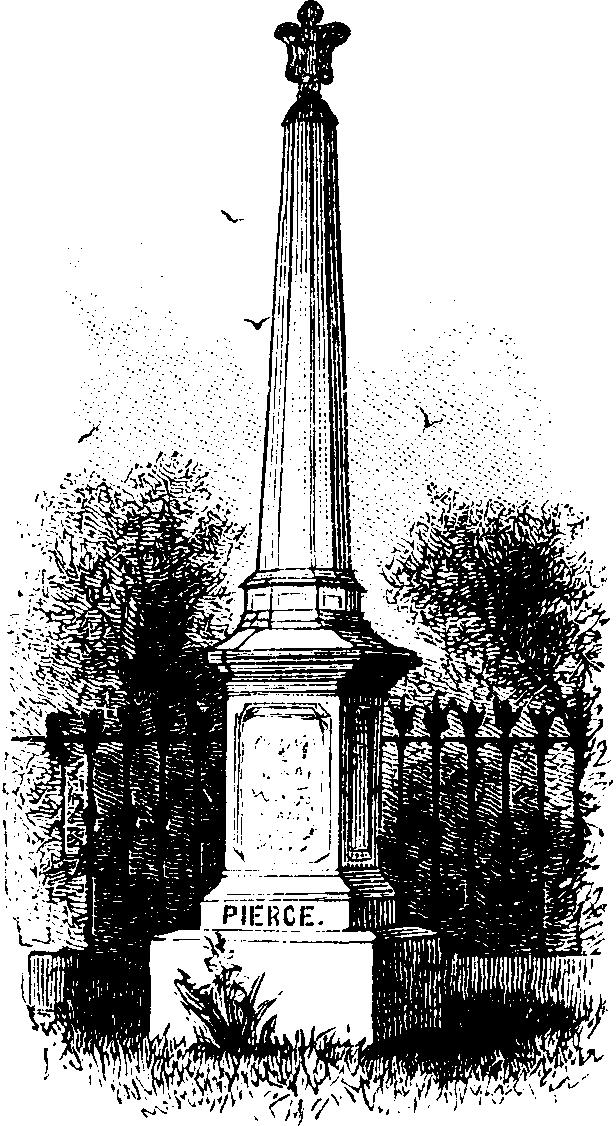
Interesting
Facts:
Pierce
tried to please those for slavery and those against it, and as a
result was rejected by his party in 1856.
·
In 1853, Commodore Matthew Perry anchored four U.S.
ships in Tokyo Bay, which was forbidden to foreigners. His visit and
actions opened Japan to trade with the west.
·
In his inaugural oath Pierce became the only President
to refuse to say, "I solemnly swear," substituting the words,
"I solemnly affirm."
·
In the election of 1852, the Democratic convention
balloted forty-eight times, eliminating all of the famous candidates,
before handing the nomination to the unknown Pierce on the
forty-ninth.
Pierce enforced the Fugitive Slave Act to appease the
South.
·
Pierce backed the
Kansas-Nebraska Act, which permitted new western territories, even
those slave-free, to decide for themselves if slavery should be spread
there.
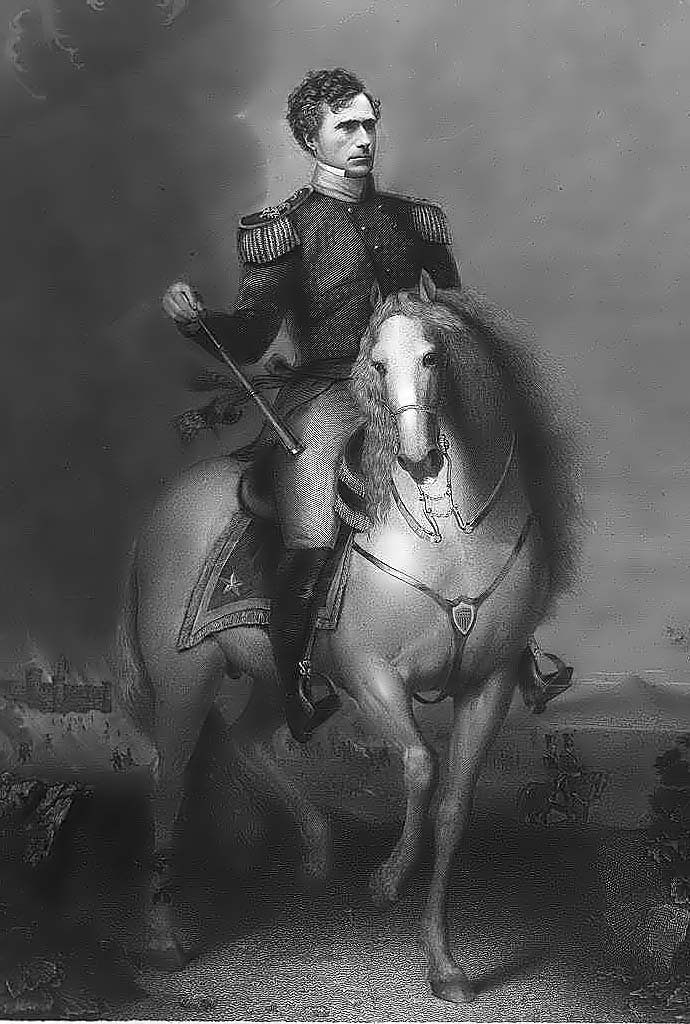
Copyright © 1992-2022 by John T. Marck. All
Rights Reserved. This article and their accompanying pictures,
photographs, and line art, may not be resold, reprinted, or
redistributed for compensation of any kind without prior written
permission from the author. Informational assistance provided by The
White House and Presidential Avenue.
A
Splendid Time Is Guaranteed For All
| | |
| |

